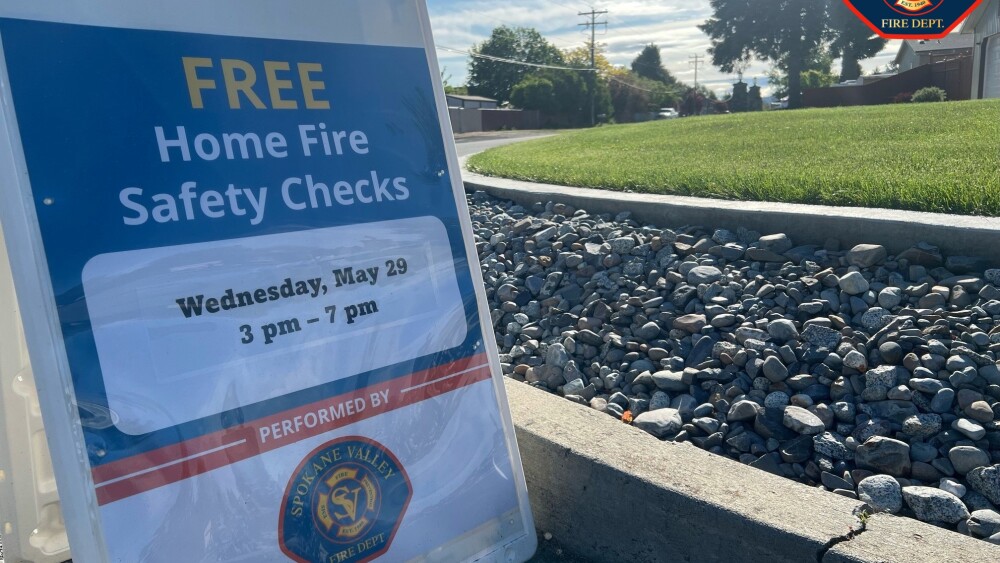While the image of firefighters rushing to save lives and property is important to spotlight for our communities, it’s crucial to recognize the equally important, though often less celebrated, role of community risk reduction (CRR) divisions. After all, it has been proven repeatedly that investing in prevention efforts can significantly reduce the frequency and severity of emergencies, ultimately saving more lives and resources and instilling confidence in our collective efforts. Unfortunately, despite their clear benefits, CRR programs often need more public awareness to secure necessary funding, which means increasing advocacy efforts, seeking support from local government, engaging with community stakeholders, leveraging grants and other funding opportunities.
A shared mission
I have traveled throughout the Western United States, responding to numerous catastrophic fires. The 2017 Tubbs Fire and the 2023 Lahaina Fire left a lasting impression on me due to the extensive destruction and the profound grief they caused their communities. The sight of post-wildfire aftermath – the charred remnants of homes, the desolate landscapes and the displaced families – only deepened my belief in the power of prevention.
It’s important to note that CRR is a shared professional duty and personal mission. Your involvement is not just important; it’s integral to the process, making you a valued and significant part of our efforts. By collectively prioritizing prevention, we can reduce the impacts of such disasters, safeguarding lives, property and the environment.
Understanding CRR
Community risk reduction involves identifying and mitigating risks before they escalate. This highly effective approach, which includes public education, fire inspections, code enforcement and community outreach, empowers communities to create safer environments and reduce the overall demand for emergency response services. The effectiveness of these strategies should reassure you of the value of your work and the impact it has on the safety of our communities.
According to the U.S. Fire Administration (USFA), effective fire prevention strategies are essential in decreasing the incidence of fires and other emergencies. The USFA recognizes this and provides a wealth of resources and support to help fire departments nationwide implement robust CRR programs. These comprehensive resources include guides on risk assessment, fire prevention education and community outreach strategies, ensuring that no department is left to face these challenges alone.
Making the case
Investing in prevention is not just a matter of public safety but also a smart economic move. The cost of preventing an emergency is typically far less than the cost of responding to and recovering from one. This practicality is a crucial point to underscore with policymakers and community members alike. For instance, installing and maintaining smoke alarms, conducting fire safety education programs, and enforcing building codes are relatively low-cost measures that can prevent devastating fires.
The Fire Prevention Officers Association highlights several benefits of a strong CRR program. These include reduced property damage, fewer injuries and fatalities, and improved community resilience. By reducing the number of emergencies, fire departments can allocate their resources more effectively, ensuring they are ready to respond when emergencies arise. This resilience is a testament to the long-term benefits of investing in prevention.
A holistic approach to CRR
To ensure efficacy, any CRR strategy must be integrated holistically across all divisions and levels of government. This means embedding CRR principles within fire departments and city planning, building, public works, streets, law enforcement, emergency management and other relevant sectors. This type of comprehensive approach helps ensure that every aspect of the governmental structure works synergistically toward reducing community risks. By aligning efforts across different departments, cities can create a unified front across multiple risk types, leading to more resilient and safer communities.
Furthermore, adopting a holistic CRR strategy fosters collaboration and resource-sharing among various governmental entities. For instance, integrating CRR into city planning can help ensure that new developments are designed with fire safety. At the same time, public works can focus on maintaining safe infrastructure that mitigates potential hazards. Law enforcement and emergency management can contribute by proactively identifying and addressing security and safety risks. This cross-departmental collaboration ensures that CRR is not seen as solely the responsibility of the fire department but rather as a collective effort. When all levels of government work together toward a common goal, the community benefits from a more comprehensive and effective risk-reduction strategy.
Best practices to overcome challenges
Numerous fire departments have demonstrated the value of investing in CRR. For example, the NFPA reports that communities with robust fire prevention programs have significantly reduced fire-related deaths and injuries. Programs emphasizing home fire safety inspections, school fire safety education, and community outreach initiatives have proven particularly effective.
One such success story is the City of Phoenix Fire Department, which has a comprehensive CRR program. Their efforts include regular fire inspections, public education campaigns and partnerships with local businesses to improve fire safety. These initiatives have resulted in a marked decrease in fire incidents and improved resident safety outcomes.
The Los Angeles Fire Department’s Community Risk Reduction Division is another excellent example. Their approach includes engaging with community members to promote fire safety awareness and conducting thorough inspections to ensure compliance with safety regulations. This proactive engagement has significantly improved fire safety standards in Los Angeles.
The NFPA highlights the importance of integrating CRR into fire departments’ missions. They offer a variety of resources and tools, from risk assessment tools to educational materials, to help fire departments develop and enhance their CRR programs. These resources support fire departments in identifying and addressing the specific risks within their communities. Other resources are geared toward the community, like the Outthink Wildfire initiative, which provides valuable insights and strategies for reducing wildfire risks.
The USFA also provides various tools and guides to enhance CRR efforts. Their resources cover everything from creating effective fire safety campaigns to implementing comprehensive community risk assessments. These tools help fire departments tailor their CRR strategies to their communities’ unique needs and risks.
By collaborating and learning from other departments and fire service organizations, fire departments can enhance their CRR programs and build safer communities.
The role of technology in CRR
Technology plays a significant role in modern CRR efforts. From using data analytics to identify high-risk areas to employing social media for public education campaigns, technological advancements have provided new tools for fire departments to enhance their prevention strategies.
The USFA emphasizes the importance of leveraging technology to improve community risk assessments and effectively tailor interventions. Virtual CRR is one resource that offers best practices, case studies and tools to help fire departments and other emergency services implement effective CRR programs. By focusing on prevention and mitigation strategies, Virtual CRR aims to reduce the frequency and severity of emergencies, ultimately creating safer communities. The platform supports fire service professionals in their mission to protect lives and property through proactive, data-driven approaches to risk reduction.
Additionally, geographic information systems (GIS) helps map and analyze data on fire incidents, demographics and environmental hazards, allowing fire departments to pinpoint high-risk zones and allocate resources efficiently. Predictive analytics further enables departments to anticipate potential risks and implement preventive measures proactively.
Lastly, as I’m sure you’re aware, social media and digital communication platforms have revolutionized public education and engagement, providing immediate and direct communication during emergencies. By embracing technological innovations, fire departments can significantly improve community safety and resilience.
For instance, the Spokane Valley Fire Department has harnessed the power of social media to enhance community safety and preparedness. By regularly sharing safety tips, emergency updates, and public education content, they engage effectively with residents and improve overall community awareness. Their commitment to community risk reduction is detailed on the department website, where they provide a wealth of resources and information.
Similarly, the Sacramento Metropolitan Fire Department has established a strong digital presence to foster community engagement and safety. Through their social media channels, they offer valuable insights, updates on emergency situations, and educational materials designed to inform and prepare the public.
Both departments exemplify how effective use of digital communication tools can significantly bolster community safety and resilience.
Final thoughts
The importance of CRR divisions cannot be overstated. While the heroic efforts of emergency responders will always be essential, a balanced approach that equally values prevention can lead to safer, more resilient communities. By investing in CRR, fire departments can reduce the frequency and severity of emergencies and ensure their resources are used more efficiently and effectively. It’s time to shift the narrative and recognize that prevention is not just an ancillary function but a cornerstone of comprehensive fire service.
A well-rounded CRR strategy fosters a proactive mindset within communities. This approach helps save lives, reduce property damage, and build public trust and confidence in local government efforts. By prioritizing prevention and integrating CRR across various government sectors, communities can better prepare for and mitigate potential risks. This holistic approach enhances public safety and contributes to the long-term sustainability and resilience of communities. The shift toward a prevention-first mindset requires a collective effort. Still, the benefits far outweigh the challenges, paving the way for a future where emergencies are minimized, and communities thrive.





